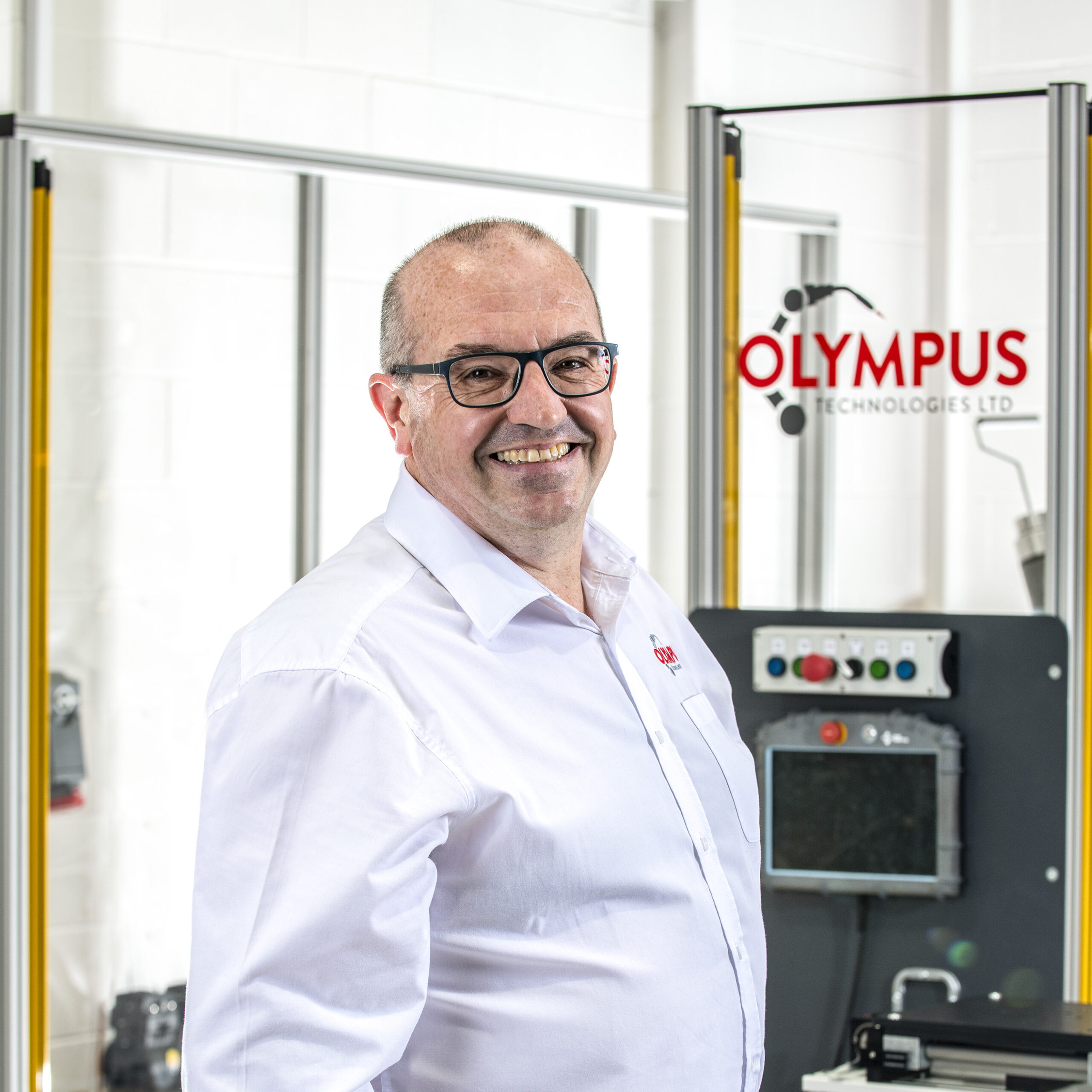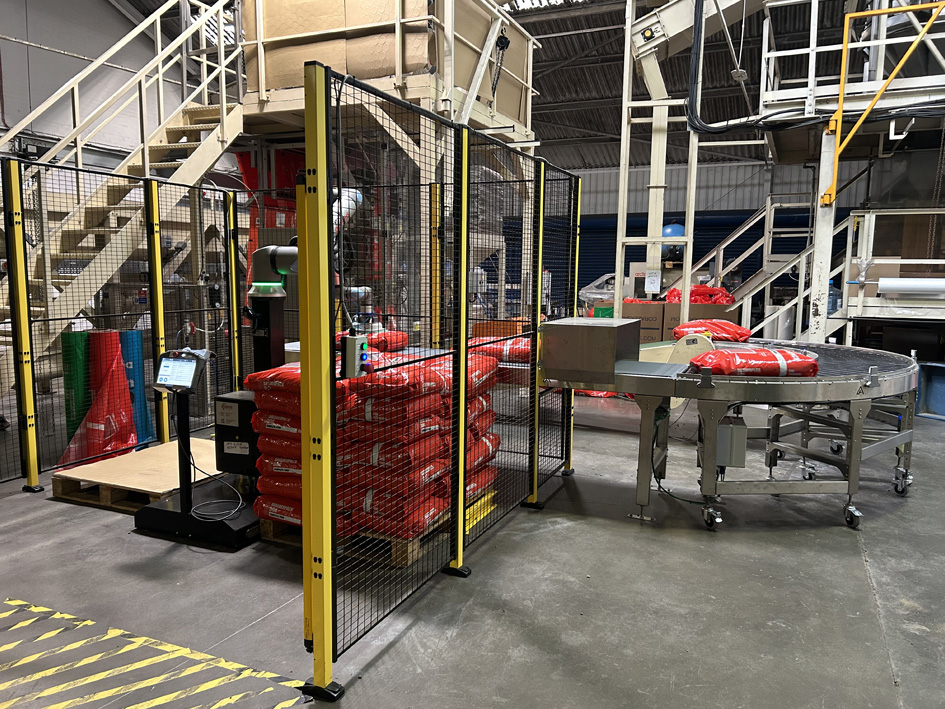Most losses do not happen on the road. They start at the pallet, then show up later as damage, disputes, and chargebacks that erode margin and reputation. Automating the routine with our cobot palletising system helps you protect product safety, comply with retailer rules, and keep teams calm under pressure.
The shift that changed the week
By 10:15 on a Thursday, the warehouse lead had three emails from a major retailer. Overhang, missing label, unstable layers. The line felt slow. Workers were under pressure. The manager loaded our mixed case routine, centred the heaviest cases, added a slip sheet where trays met cartons, and locked the wrap program for that load type. The cobot repeated the pattern all afternoon. The next trailer left clean. No exceptions. No rework. That single shift became the moment the team decided to standardise every pallet at the end of line.
Why mixed case needs a better routine
Mixed case helps you use cube, reduce touches in store, and serve customers who need multiple SKUs on one pallet. It is also challenging. Patterns change quickly, cartons vary by strength, and settings drift. Human focus breaks when demand spikes or a line restarts after an emergency stop. That is when small mistakes trigger big costs.
Automation removes the guesswork. The system applies the same steps every time, so loads stand up to transport and audits. Your warehouse gains control over the form of each layer, the centre of gravity, and the containment force. Product arrives intact, retailers receive what was promised, and your reputation strengthens.
Data that closes the loop
Good practice needs evidence. The Olympus palletising software captures the detail that matters. Photo records to prove zero overhang. Wrap counts that match the program. Case orientation and label position that scan first time. With customer data and claims history, you can generate simple rules by retailer and route. Increase containment on tall mixed loads. Add interlayers where trays meet RSC cartons. Nudge corner boards when cartons are weak. Over time, you reduce risk, fines, and penalties while protecting margin.
Stability built in, not bolted on
- Predictable layers: Column dominant for strong cartons, pinwheel for mixed footprints, brick bond for display trays, picture frame when the top needs extra cover.
- Multiple SKUs, same routine: The cobot handles palletising and depalletising, then switches to mixed case without drama.
- Speed without drift: Multi pick intelligence keeps cycle time high. Twin station cells keep the robot working while pallets are swapped.
- Secure by design: Slip sheets, tie sheets, and label zones are prompted in the interface so users do not forget the essentials.
The result is consistent build quality that protects products, workers, and consumers. You maintain workplace health and safety, reduce slips and falls risk around the end of line, and lower liability exposure.
Compliance that prevents deductions
Retailers need pallets that comply with height limits, label zones, and footprint rules. Our software guides operators to comply before a load leaves the line. The cell creates photo evidence for each face. That closes gaps that often lead to reputational damage, forced investigations, or disputes with suppliers.
When loads arrive clean, companies avoid discrimination between sites or shifts. Every pallet meets the same standard, whether it was built at peak or on a quiet night. Your brand stands behind a repeatable system, not heroic effort.
Results you can plan around
A compact 3.1 m by 2.9 m footprint fits most locations. Throughput up to 14 cycles, or 70 boxes per minute, supports busy operations with dozens of product types. The system handles UK pallets at 1200 mm by 1000 mm, works with custom grippers for tricky packs, and delivers a typical ROI around 18 months. You enhance stability, protect stock, and reduce the likelihood of chargebacks that slide through unnoticed until month end.
An example from a food and drink line
A regional producer with long mixed case runs struggled with damage on tall assortments. Customer data showed losses peaking on Fridays when staffing was thin. We installed a twin station cell, added a top-cap prompt on the last layer, raised containment targets for tall forms, and set barcode orientation outward as standard. Within four weeks the business saw chargebacks fall to near zero. The warehouse team reported lower stress and fewer stops for rework. Retailers noticed that deliveries arrived neat, labels visible, and counts right. The client asked to extend the cell to a second line for peak season.
Tips to start strong
- Use your claims data to set initial rules by retailer, route, and SKU family.
- Lock zero overhang as a pass or fail gate.
- Standardise three wrap programs by load type, then verify on the floor.
- Store slip sheets near the cell so operators can reach them fast.
- Add quick weekly reviews, then adjust patterns where failure risk is highest.
These are simple, crucial steps that keep the focus on prevention, not cure.
Protect people as you protect product
End of line work is physical. The cobot takes on the lift so employees focus on checks and flow. That reduces injury risk, supports workplace health, and helps you comply with UK guidance. It also keeps experienced operators on tasks that need judgement, such as changeovers, quality exceptions, or short runs that arrive without notice.
Built for the future
The system grows with you. New SKUs, new retailers, or a longer pallet height can be added in minutes with offline tools. You can combine pallets, switch patterns, or depalletise returns when suppliers send mixed inventory. If a form factor changes, you adjust the pattern and keep running. The approach is secure, simple to govern, and ready for the next season.
What to do next
If mixed case is part of your promise, now is the time to reduce damage and chargebacks with mixed case palletising that you can trust.
- Get Free Consultation to assess your line and set targets.
- View Brochure to see the full feature list and protections built into the cell.
- Talk to an engineer about your warehouse layout, current loads, and the results you aim to achieve.
Phone: 01484 514513
Email: [email protected]
West Yorkshire, UK. Serving UK and Ireland














